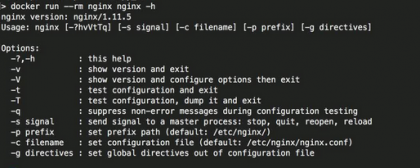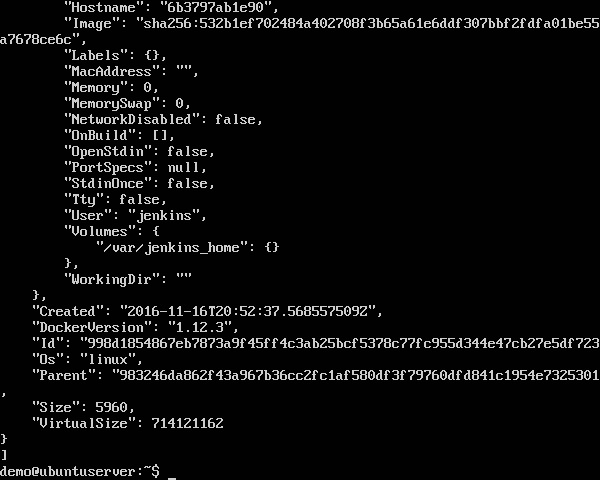

- #Docker run image id returns nothing update#
- #Docker run image id returns nothing verification#
- #Docker run image id returns nothing download#
cpuset="" CPUs in which to allow execution (0-3, 0,1) cidfile="" Write the container ID to the file c, -cpu-shares=0 CPU shares (relative weight)

add-host= Add a custom host-to-IP mapping (host:ip) a, -attach= Attach to STDIN, STDOUT or STDERR. What do we do with them? This is where docker run command comes in.
#Docker run image id returns nothing update#
Docker appears to update their master images on a fairly frequent basis. This can help us assess how "fresh" a particular build is. CREATED: The date the repository was created, as opposed to when it was pulled.Sometimes, such as when we commit a container without specifying a name or tag, the repository or the tag is, but we can always refer to a specific image or container using its ID. IMAGE ID: This is like the primary key for the image.Each of these versions is tagged with a version number, a name, and there's even a special tag called "latest" which represents the latest version. As we can see from the list, we've pulled down different versions of linux. TAG: Tags represent a specific set point in the repositories' commit history.REPOSITORY: The name of the repository, which in this case is "ubuntu".The command, docker images, returns the following columns: Status: Downloaded newer image for centos:latestĬentos latest ae0c2d0bdc10 2 weeks ago 224 MB In Docker, versions are marked with tags.Ĭentos:latest: The image you are pulling has been verified

#Docker run image id returns nothing download#
We also see the image has a TAG inside of it.Īs we can see from the command below, docker pull centos:latest, we can also be more specific, and download only the version we need. So, the output indicates only one image is currently on my local machine. Ubuntu latest 5506de2b643b 4 weeks ago 199.3 MB REPOSITORY TAG IMAGE ID CREATED VIRTUAL SIZE To see what Docker images are available on our machine, we use docker images: The pull command without any tag will download all Ubuntu images though I've already done it. Status: Downloaded newer image for ubuntu:latest The pull command will go up to the web site and grab the image and download it to our local machine.ĭigest: sha256:f3a61450ae43896c4332bda5e78b453f4a93179045f20c8181043b26b5e79028

#Docker run image id returns nothing verification#
disable-content-trust Skip image verification (default true) a, -all-tags Download all tagged images in the repository Usage: docker pull an image or a repository from a registry Once we found the image we like to use it, we can use Docker's pull command: We got too many outputs, so we need to filter it out items with more than 10 stars: Nuagebec/ubuntu Simple always updated Ubuntu docker images. Torusware/speedus-ubuntu Always updated official Ubuntu docker imag. Ubuntu-debootstrap debootstrap -variant=minbase -components. Ubuntu-upstart Upstart is an event-based replacement for. Rastasheep/ubuntu-sshd Dockerized SSH service, built on top of of. Ubuntu Ubuntu is a Debian-based Linux operating s. NAME DESCRIPTION STARS OFFICIAL AUTOMATED If we do the same search, Jenkins, we get exactly the same result as we got from the web: s, -stars=0 Only displays with at least x stars automated=false Only show automated builds The Docker search command allows us to go and look at the registry in search for the images that we want.


 0 kommentar(er)
0 kommentar(er)
